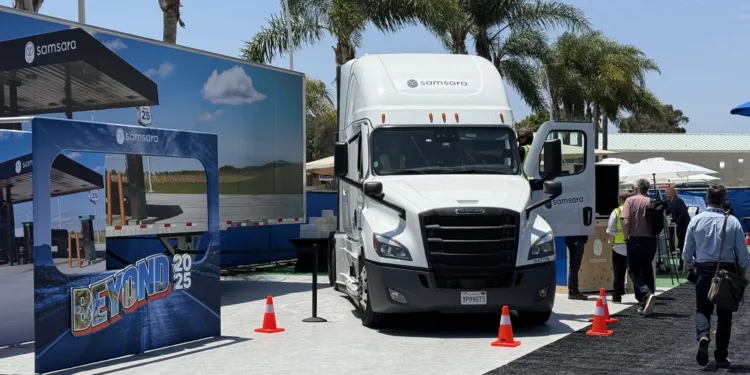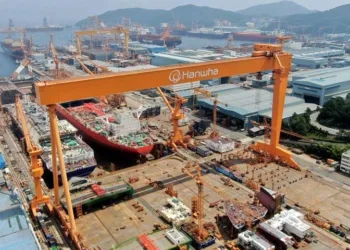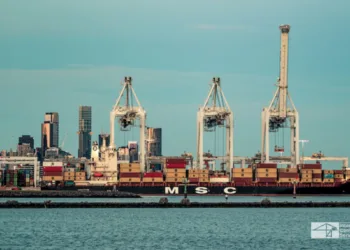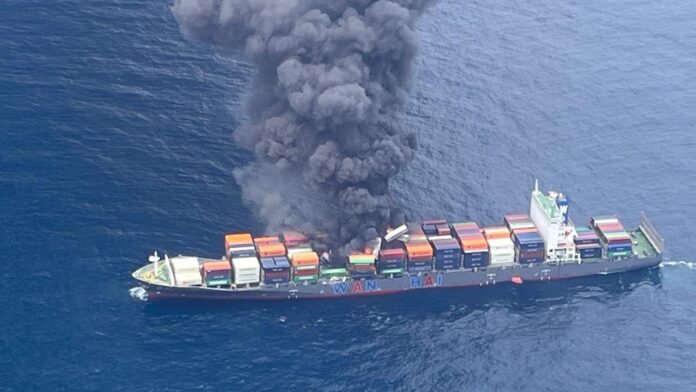It’s the most important time of the year for the supply chain as the industry’s peak season approaches. Yet there are risks from a perfect storm of complications: extreme weather, labor shortages and rising cargo theft. To handle these challenges, artificial intelligence is emerging as a crucial investment for companies looking to maintain safety and efficiency, according to a recent webinar hosted by Samsara.
To set the table and understand the stakes, Dr. Ilya Jackson, research scientist at MIT’s Center for Transportation and Logistics, began by highlighting a McKinsey report that looked at the potential of generative AI. The report noted that over $190 billion in value can be unlocked across travel and logistics, with an extra $18 billion from supply chain and operations management.
To understand how to get that value, one key to AI is to successfully implement it. Panelists noted that the implementation of AI in demand planning and forecasting has transformed how their companies position inventory throughout their networks.
Better demand planning equals better cost savings. Jackson said that MIT research in partnership with consumer packaged goods manufacturers showed that AI and machine learning integration can improve forecasting accuracy by 11 percent.
It wasn’t only forecasting and planning that was noted as being disrupted by AI; the technology is having a real human impact on how these companies are interacting with their people.
Workforce Agility Through Cross-Training and AI-Driven Onboarding
While seasonal hiring pressures have eased slightly compared to previous years, companies like United Natural Foods Inc. (UNFI) have shifted focus toward building stable, cross-trained teams that can adapt to changing business demands.
Tehzin Chadwick, senior vice president of safety at UNFI, said that while there are hiring pressures, there are also opportunities. Chadwick noted UNFI is experiencing a higher volume of applications in the market.
“This shift, however, has allowed us to really rethink how we approach workforce agility, focusing on building a stable, cross-trained team that can really just flex,” said Chadwick.
This led to UNFI rethinking how it’s approaching workforce agility. “Instead of just ramping up for peak season, we’re focused on building a stable, cross-trained team that can flex with those changing business demands. And then to support this, we’ve also started our seasonal hiring earlier than in previous years,” added Chadwick.
“We’re focused on building a stable, cross-trained team that can flex with changing business demands,” Chadwick noted. “AI is starting to play a bigger role, not just in how we hire, but in how people experience work once they’re here.”
The extra time allows UNFI to onboard the associates and reinforce safe work practices to prep them when the demand spikes occur. To help with the workforce training and development, the AI-powered tools recommend learning pathways for UNFI associates.
“And it accelerates that skill building. And that overall creates a real sense of opportunity and belonging, and that’s what makes our company, in our opinion, stand out, and not just during the holiday rush, but during the entire year,” said Chadwick.
Sanjit Biswas, CEO and co-founder of Samsara, observed similar patterns across multiple industries. “It’s basically all around high rates of labor turnover in frontline industries,” Biswas said. “These are really challenging jobs, like physically intensive, 8-, 10- or 12-hour shifts, especially during the rush seasons.”
Biswas noted there is a solution through adopting technologies that make these demanding jobs safer and more manageable through AI-powered mobile applications that simplify workflows, maintain safety standards and recognize when workers might need breaks.
Weather the Storm: AI-Powered Safety Measures
In addition to training, winter weather safety is top of mind among panelists. During the holiday peak season, traffic and weather risks are at their highest levels, requiring fleets to use a proactive approach to mitigate.
“We know that icy roads are a serious risk, and the data shows that 1 in 5 crashes happen on slick surfaces. That’s why we’ve taken a proactive, layered approach to keep our drivers and the communities in which we serve safe,” said Chadwick.
UNFI has implemented a multi-layered approach to combat this risk. “The first thing we’ve done is we’ve upgraded our weather monitoring tools,” explained Chadwick. “Real-time alerts are now built directly into our vehicle telematics system, giving our dispatchers, as well as our supervisors, a live fleet map with weather overlays.”
The technology from Samsara provides drivers with in-cab alerts about hazardous conditions—what Chadwick called “a game changer” from a safety perspective. The system enables fleet managers to assess weather conditions using artificial intelligence at scale, understanding what thousands of drivers might be headed into and providing voice feedback about potential hazards.
While drivers get in-cab alerts, there are still challenges between what operations managers see and what drivers are experiencing on the road. Biswas noted that with Samsara’s latest tech, granular weather risks and their conditions are now at a driver’s fingertips, allowing them to adjust much faster than before.
The extra tech also helps as risk increases significantly during shorter winter days. “If you look at the National Highway Traffic Safety Administration statistics, they show about one in two fatality accidents happens at night,” Biswas pointed out. AI-powered alerting systems help keep drivers aware of their surroundings when visibility is compromised.
The $35 Billion Problem: Cargo Theft in a Tech-Enabled Era
Panelists noted cargo theft has become an endemic problem in the United States, with losses estimated at $35 billion annually, according to Janelle Griffith, North American logistics practice leader at Marsh.
“Cargo theft in the United States is a problem that has become endemic,” Griffith said. “The results of cargo theft, specifically tech-enabled cargo theft, are now upwards of $35 billion, and they’re trending up right now, unfortunately.”
Theft patterns typically peak before Thanksgiving and continue through January, targeting high-value retail items and even food and beverage products in the supply chain. Griffith noted that modern cargo theft has evolved beyond opportunistic crime.
“This is not just your normal smash and grab, or your traditional smash and grab,” she explained. “It is planned, it is orchestrated, and it’s done by virtue of theft rings that are all tech-enabled.”
Building Resilient Supply Chains Through AI
The implementation of AI extends beyond safety and security. At UNFI, AI-powered tools have been embedded throughout the supply chain—from procurement to transportation and fulfillment.
“In procurement, it helps us improve our service levels, reduce inventory days on hand,” Chadwick said. “In transportation, platforms like Samsara support dynamic routing, so we can avoid traffic and hazardous conditions.”
AI has also improved service levels. “AI tools help us position inventory more accurately across our entire network, which not only helps us from a service level perspective, but it also reduces unnecessary movements and congestion within our warehouse facilities,” said Chadwick.
From a risk management perspective, AI provides added insights that reduce uncertainty. Janelle Griffith with Marsh Logistics highlighted this application: “When it comes to risk, the biggest issue with risk and with underwriting that risk is uncertainty. And what AI does, it helps to remove uncertainty.”
The technology proves particularly valuable in combating cargo theft through identity verification and regulatory compliance monitoring, while also providing better data for insurance underwriting.
The post AI is turning peak season challenges into opportunities appeared first on FreightWaves.





















